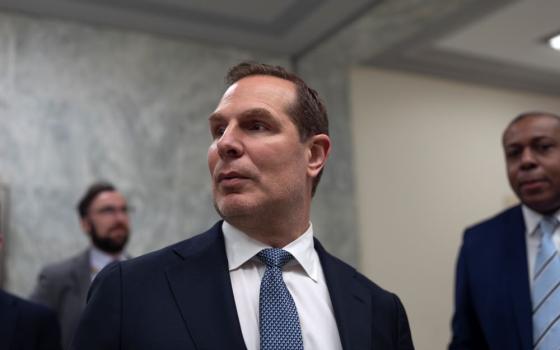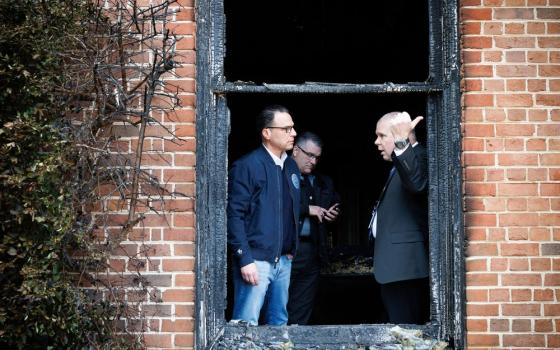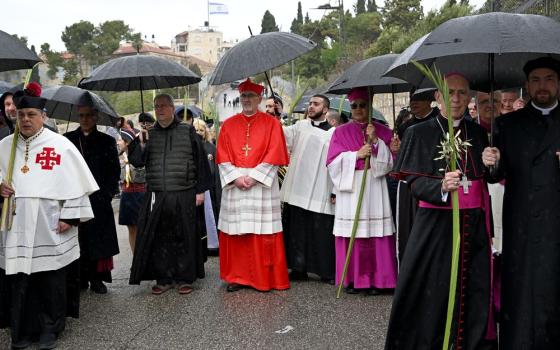OPINION
Within a two-day period this week, contrasting monarchical spectacles will compete for billions of TV viewers. The first will involve a likely future king's wedding; the second, the beatification of a supreme pontiff.
Many will enjoy the glamour of Kate and Will's English royal wedding as a revolution that long ago replaced a once unaccountable British monarchy with a more benign parliamentary monarchy. By contrast, many have expressed deep reservations and concern about the second ceremony, a pageant aimed at brightening a dead pope's memory by adding spiritual acclaim.
The protesters draw their energy and angst from the well-documented failings of Pope John Paul II, soon to be Blessed John Paul II, in his handling of our church's child abuse debacle.
Survivors of clergy sex abuse see the hurried beatification as nothing less than more church salt in deep personal wounds.
The uproar coming from many corners of the church at the prospects of this beatification has already diluted the spiritual energy being sought by beatification supporters -- if anything, drawing even more attention to the serious unanswered questions about John Paul's role in turning a blind eye to those clerics who harbored sex abusers or committed the abuse themselves.
Pope Benedict XVI, meanwhile, is 84 years old, and some wonder out loud if the present rush to sainthood is an effort to provide a form of "saint's cover" for both popes and the Vatican curia that has so clearly botched the most serious church crisis in our lifetime and one of the most serious in the history of our church.
At the core of the sex abuse issue and the beatification as well is a festering sense of a system totally lacking in accountability to its ordinary people, to the laity of the church.
Traditionalists defend the monarchical structure, saying take it or leave it, that the absolute monarchy of our church structure has somehow been willed by God. But that surely is incorrect.
Incontrovertible historical evidence indicates the early church operated successfully with a structure that was consensual, not fundamentally monarchical in nature -- for at least three centuries, until Roman emperors intervened. Through the centuries, our church's governing structure has been patterned more on European courts and kings than the scriptures or creed of our faith.
Until Pope Pius XI finally settled the Italian papal status in the 1930s, the papacy had been a pawn in European power politics for centuries. Foreign rulers controlled most key episcopal appointments. Pope Pius XII reigned monarchically through and after World War II with a curia that followed customary royal court procedures, including secrecy.
Pope John XXIII had significant diplomatic experience abroad and a broad and different vision. On unexpectedly succeeding Pius XII, he unilaterally decided the time was ripe to update the papacy and to adopt a more positive and collegial pastoral style. He shocked his curia by calling a church council, the Second Vatican Council, which began in 1962 and ran through 1965.
The Roman court, or curia, was further shocked when the 2,500-plus council bishops early on rejected overwhelmingly its draft proposals, aimed at preserving curial power. Pope John XXIII backed the bishops, but died before the second council session began.
Pope John's successor, Pope Paul VI had earlier served for many years in the curia. He evidently was elected with significant curia support and proceeded to confirm traditional monarchial ways, removing celibacy, contraception and curial reform from the council's consideration. In the process he thwarted the council's emphatic attempt to confirm the college of bishops as co-equal with the pope. The council's bishops may have initially ambushed the curia, but it soon had recovered its elevated status
Pope Paul VI's eventual successor, Cardinal Karol Wojtyla, was elected in 1978. For decades he had been a leader of the tightly controlled church in Poland. As supreme pontiff, he brought his governing habits to the larger church. The result would be the restoration of unbridled monarchical authority after he stripped Vatican II-inspired national conferences of bishops of all practical and possible countervailing authority.
This structure of absolute papal authority, vested in the monarch, has sought and received, through the process of papal appointments, the total control of clerics, doctrine and liturgy, as well as an unremitting suppression of alternative views.
And it has done this in the name of preserving "orthodoxy," when, in fact, it has been much more about power and structure. A more authentic Catholic view would hold to unity in creed and charitable pluralism in theologies and ecclesiology.
The uproar, then, over John Paul II's beatification only underscores a significant and irrepressible unease among laity, religious and clergy at the way the church is being governed and the lack of accountability in this governance.
Some might smile as they watch Prince William, the bachelor, transform into a married man. However, the beatification of Pope John Paul II, and particularly the way it is being rushed by all reasonable standards, is causing considerable consternation -- and is an affirmation of a church leadership detached from a significant and hurting sector within its ranks.
[Gerald Slevin is a retired New York City lawyer living now on Long Island, New York.]
More NCR coverage of the beatification of John Paul II
Maureen Fiedler: Beatifications and Politics
Michael Baxter: Biography of JPII raises questions about partiality
John L. Allen Jr.: In death as in life, John Paul a sign of contradiction
Gerald Slevin John Paul beatification highlights dysfunctional monarchy
John Allen's Beatification Q&As
#1: What's the Rush?
#2: What’s the deal with miracles?
#3: Why make saints out of popes?
#4: What’s the Divine Mercy connection?



